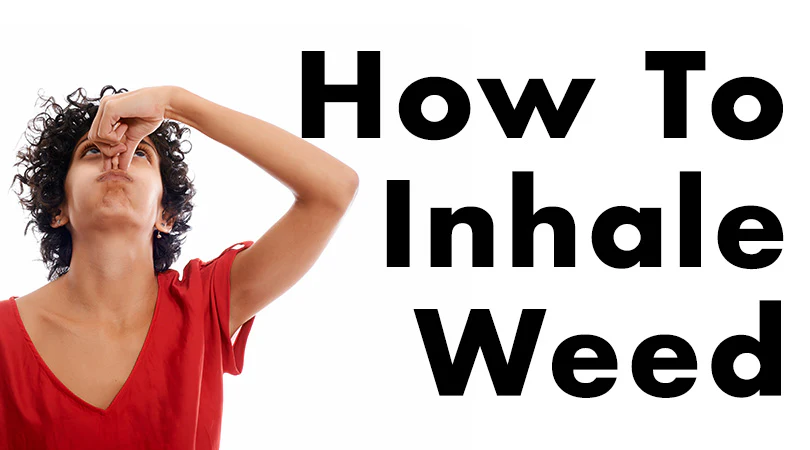How to Inhale Weed: A Comprehensive Guide
Inhaling cannabis, commonly referred to as “weed,” is a practice that has gained popularity for its psychoactive effects and therapeutic benefits. However, for those new to cannabis consumption, understanding how to inhale properly can be essential for maximizing the experience while minimizing discomfort. This article will explore the various methods of inhaling weed, the science behind it, safety considerations, and frequently asked questions.
Understanding Cannabis Inhalation
Inhaling cannabis allows the active compounds, primarily tetrahydrocannabinol (THC) and cannabidiol (CBD), to enter the bloodstream quickly through the lungs. This method of consumption is popular due to its fast onset of effects compared to other methods like edibles.
The Science Behind Inhalation
When cannabis is smoked or vaporized, the heat causes a chemical reaction that releases cannabinoids and terpenes into the air as vapor or smoke. Once inhaled, these compounds are absorbed through the alveoli in the lungs and enter the bloodstream, producing effects within minutes.
Methods of Inhaling Weed
There are several popular methods for inhaling weed, each with its own unique characteristics and user experiences.
1. Joints
A joint is a hand-rolled cigarette containing cannabis.
How to Inhale from a Joint:
- Light One End: Use a lighter or match to ignite one end while holding the other end in your mouth.
- Draw Slowly: Take a slow draw from the joint, allowing smoke to fill your mouth before inhaling it into your lungs.
- Inhale Deeply: Once you have smoke in your mouth, inhale deeply to draw it into your lungs.
2. Blunts
Blunts are similar to joints but are rolled with tobacco leaves or cigar wraps.
How to Inhale from a Blunt:
- Light the End: Ignite one end of the blunt while holding it between your fingers.
- Savor the Flavor: Take a slow draw and enjoy the combined flavors of cannabis and tobacco.
- Inhale: As with joints, inhale deeply after drawing smoke into your mouth.
3. Pipes
Pipes are small devices designed for smoking cannabis.
How to Inhale from a Pipe:
- Pack the Bowl: Fill the bowl with ground cannabis.
- Cover the Carb (if applicable): If your pipe has a carb hole, cover it with your finger.
- Light and Draw: Ignite the cannabis while inhaling through the mouthpiece, then release your finger from the carb hole to clear the smoke.
4. Bongs
Bongs use water filtration to cool and filter smoke before inhalation.
How to Inhale from a Bong:
- Fill with Water: Ensure there is enough water in the bong to filter smoke.
- Pack the Bowl: Fill the bowl with cannabis.
- Cover and Light: Cover any carb holes and light while inhaling through the mouthpiece.
- Clear the Chamber: Remove your finger from any carb holes or lift the bowl to clear smoke into your lungs.
5. Vaporizers
Vaporizers heat cannabis at lower temperatures than combustion methods, producing vapor instead of smoke.
How to Inhale from a Vaporizer:
- Set Temperature: Adjust the vaporizer settings according to preference.
- Inhale Slowly: Draw vapor slowly through the mouthpiece until you feel it in your lungs.
Techniques for Effective Inhalation
Proper inhalation techniques can enhance your experience and reduce discomfort.
1. Draw the Smoke into Your Lungs
To effectively inhale weed:
- Imagine sipping through a straw; draw in air along with smoke.
2. Start Slow
Beginners should take smaller puffs initially:
- This helps prevent coughing and allows you to gauge your tolerance.
3. Use Oxygen to Enhance Absorption
After inhaling:
- Take an additional breath of fresh air; this helps increase THC absorption in your bloodstream.
4. Exhale Slowly
Exhaling slowly can help control throat irritation:
- This technique also allows you to maintain control over how much smoke you release.
Safety Considerations
While inhaling weed can be enjoyable, it’s essential to prioritize safety:
- Know Your Limits: Understand how much THC affects you; start with small amounts.
- Avoid Mixing Substances: Combining cannabis with tobacco or alcohol can increase health risks.
- Use Quality Products: Ensure that you’re using clean, uncontaminated cannabis products.
- Stay Hydrated: Smoking can cause dry mouth; drink plenty of water before and after consumption.
- Be Aware of Surroundings: Always be conscious of where you are when consuming cannabis; ensure it’s legal in your area.
Summary Table of Inhalation Methods
| Method | Description | Pros | Cons |
|---|---|---|---|
| Joints | Hand-rolled cigarettes containing cannabis | Portable; easy to roll | Can burn unevenly |
| Blunts | Rolled using tobacco wraps | Flavorful | Health risks due to tobacco |
| Pipes | Small devices for smoking | Simple; reusable | Requires packing |
| Bongs | Water filtration system | Cooler smoke; less harsh | Bulky; requires water |
| Vaporizers | Heats cannabis without combustion | Less harmful than smoking | More expensive |
FAQ Section
Q1: How do I know how much weed to inhale?
Start with small puffs and see how you feel before taking larger hits; everyone’s tolerance varies.
Q2: What’s better for my lungs—smoking or vaping?
While both methods involve inhaling substances that can irritate lungs, vaping is often considered less harmful than smoking due to lower temperatures and fewer toxins produced during combustion.
Q3: Can I inhale weed without smoking?
Yes! Edibles and tinctures are alternatives that do not require inhalation but provide similar effects through digestion or sublingual absorption.
Q4: Is there a safe way to inhale weed?
No method is completely safe; however, using vaporizers may reduce some risks associated with traditional smoking methods.
Q5: What should I do if I start coughing after inhaling?
If you cough after inhaling, take a break and drink water; coughing can be a natural reaction when starting out or taking large hits.
Conclusion
Inhaling weed can be an enjoyable experience when done correctly and safely. By understanding various methods of consumption, employing effective inhalation techniques, and prioritizing safety measures, users can maximize their enjoyment while minimizing potential discomfort or health risks associated with smoking or vaping cannabis products.For more information on health considerations related to marijuana use, consider visiting Cannabis – Wikipedia.



